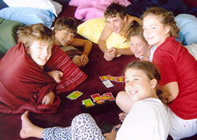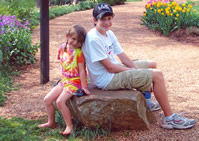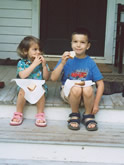THE CHANGING FAMILY

Families have changed so dramatically that only 3 out of 10 children live in traditional families with two parents in their first or only marriage.1 Fully, half of children will live in a single-parent household for at least part of their lives. Almost one-third live with step families and 6% live with grandparents. The categories of family types beyond the traditional ones include single parent due to divorce, death, abandonment, or mother never married; step family; blended family; foster family; grand parented family; and homosexual family. With all those family differences, parenting effectively provides continuously new challenges.
MORE BAD NEWS THAN GOOD
The good news is that children from non-traditional families can’t feel alone with being different because they’re accustomed to hearing about many different families. Other good news is that many children from non-traditional families grow up to be well-adjusted and happy. Unfortunately, there is more bad news than good. Most single-parent families are father-absent; and father absence contributes greatly to violence, crime, and delinquency among children. Three quarters of adolescents in chemical dependency hospitals, more than 60 percent of teen suicides, and three quarters of teen pregnancies are adolescents from single-parent homes.2
Further bad news is that cohabitation has become increasingly the norm. If single parents with children are receiving welfare payments, getting married significantly reduces the amount they receive. A couple would then lose money if they married, but could keep the extra money if they only lived together.3 That greatly reduces the motivation for family stability.
HOW CHILDREN FEEL ABOUT THEIR CHANGING FAMILIES 4

Adjusting to divorce, separation, and blending families causes stress, abandonment, and sibling issues. A recent study of 467 children from diverse families found that most children were surprised and confused about the separation or divorce because they weren’t provided with knowledge beforehand and had little opportunity to ask questions.
Children who were able to talk to their parents about their problems related to divided households adapted better than those who had little information. Approximately half of the children who lived in divided households responded positively about their divided lives. Of course, that also means that half did not, so there are many that need support and help.
A parent’s death has a dramatic impact on children. Immediate regression behaviors like sleeping problems, anger, and worry are common. Even after time, these children often cope with confidence and preoccupation with illness problems (Barr-Harris).5
WHAT NON-TRADITIONAL FAMILIES CAN DO TO RAISE HAPPY, WELL-ADJUSTED CHILDREN

While raising children in non-traditional families can be more difficult, here are some suggestions for all kinds of families:
1. If you’re having marriage problems, get counseling to improve the relationship before considering divorce or separation. Marriages are never perfect, but your children are likely to be happier if you can stay together in a respectful relationship.
2. If you’ve made a decision to separate or divorce, take time to explain to children what’s happening, assuring them that they can continue to love both parents and be loved by both as well, provided those are likely possibilities.
3. If you have always been a single parent, explain to your children at an age-appropriate level the reasons that you are the only parent and reassure the children that you are capable of parenting them well. Don’t share your worries and anxieties with your children. That’s what counselors and friends are for.
4. Don’t confide inappropriate adult details to your children—whether you are married, single, separated, or divorced.
5. Homosexual parents should help children with appropriate language and explanations for their difference, so that children will feel comfortable responding to questions by adults and other children.
6. Help children gradually build positive relationships with stepparents and step siblings. One-to-one time with a stepparent can be very effective for developing closeness.
7. Consider that sibling rivalry will be expressed in very different ways in blended families. Sibling rivalry is very natural even when children don’t express it openly.
8. Don’t treat children like adults if you lead a single-parent family.
9. Children benefit by having same- and opposite-sexed role models. Aunts, uncles, grandparents, teachers, coaches, and Scout leaders can all be helpful to your children.
10. Single-parent-led families can get together with other families to maximize feelings of togetherness and fun for holidays and vacations.
11. Single adults should be sure to preserve some time for adult relationships without children present.
12. Don’t despair. Many non-traditional families raise successful, happy children.
References:
1U.S. Census Bureau, 2003. Rainbow Statistics: A Generation At Risk.
http://www.rainbows. org/statistics.html
2 U.S. Census Bureau report, Child Support and Alimony; 1989,
released Oct 11, 1991.
3America’s Changing Family by Aida Aki, December 2, 2005.
4Children’s Views of Their Changing Families by Judy Dunn and
Kirby Deater-Deckard, September, 2001.
5Death Statistics, 2003. Rainbow Statistics: A Generation At Risk,
http://www.rainbow.org/statistics.html
©2010 by Sylvia B. Rimm. All rights reserved. This publication, or parts thereof, may not be reproduced in any form without written permission of the author.
